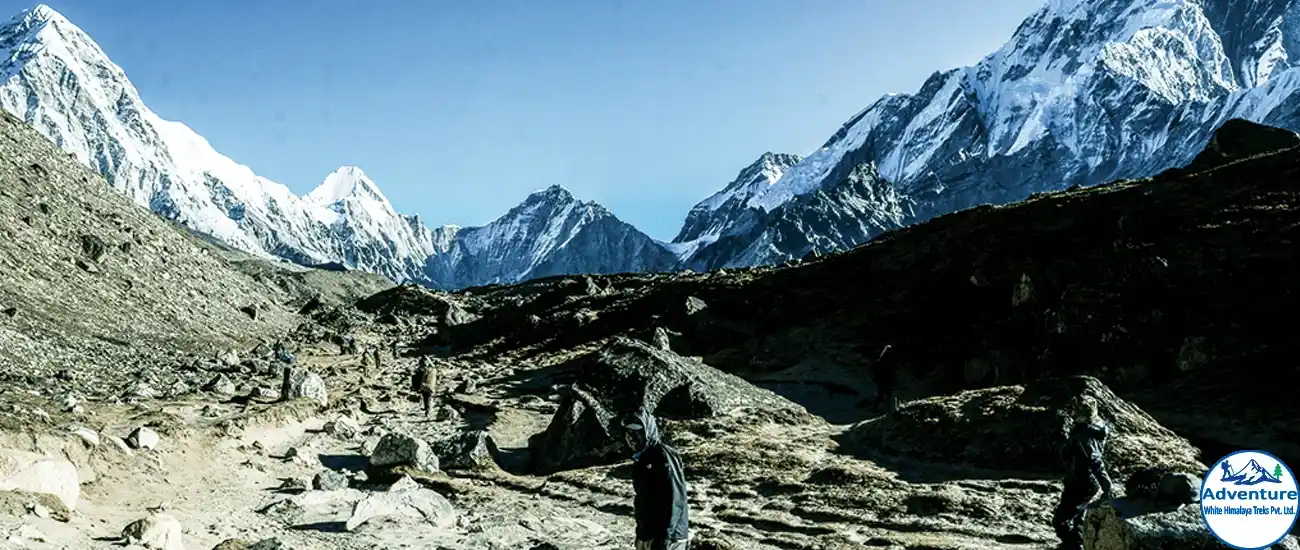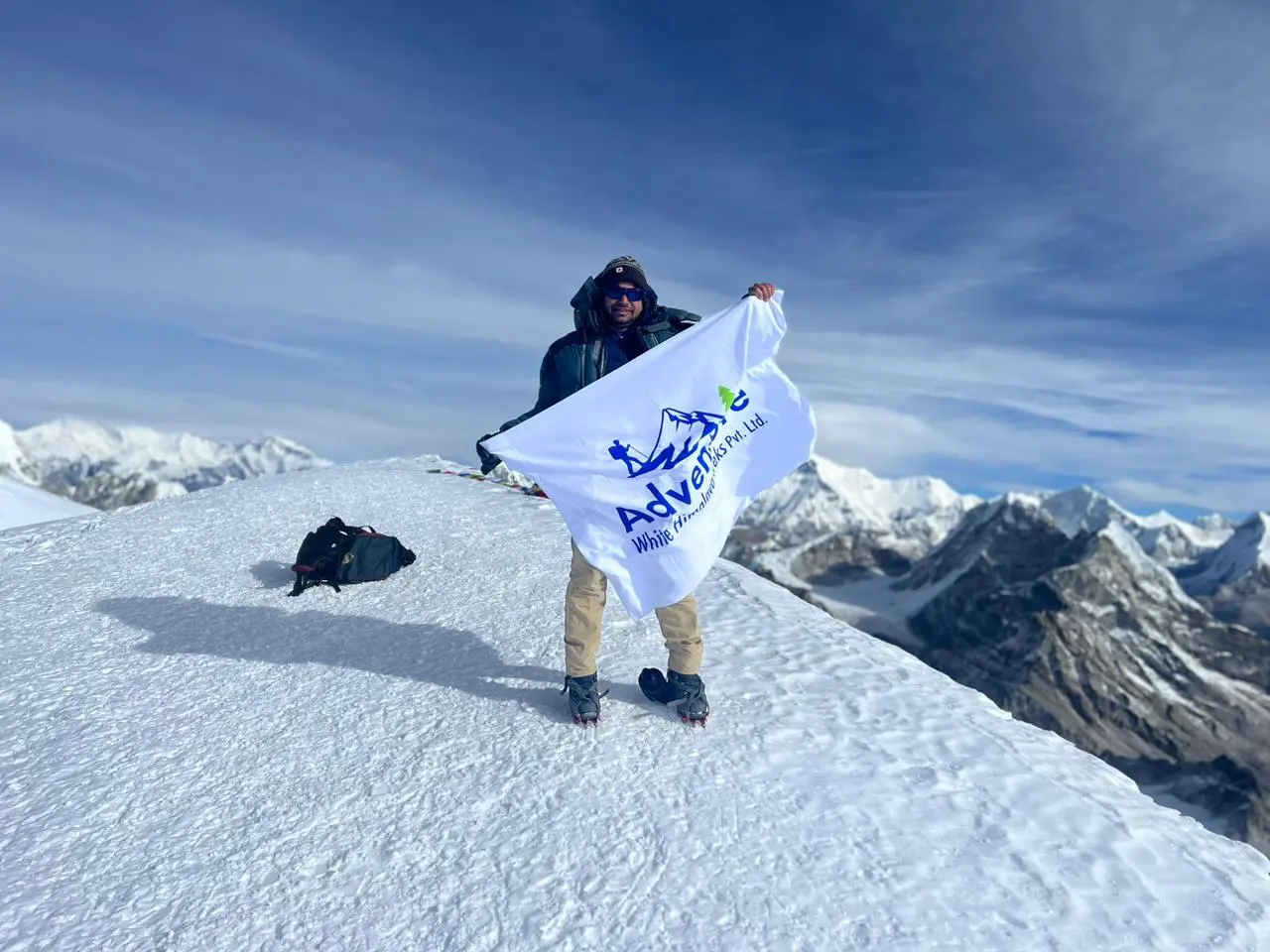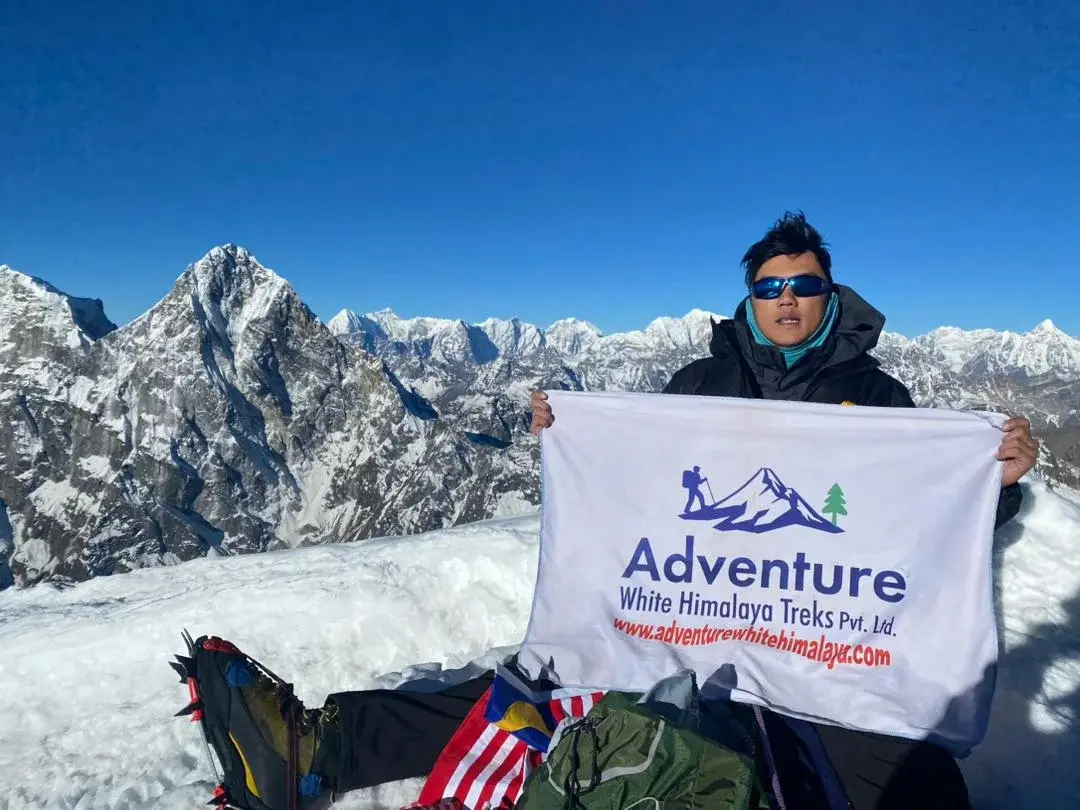Do you have any plans to visit Nepal?

Solo Everest Base Camp Trek – Is It Safe & Worth It?
Why Trek to Everest Base Camp Solo?
Many people dream of standing at Everest Base Camp, but not everyone wants to go with a group. A Solo Everest Base Camp Trail is a special journey where you walk alone, set your own pace, and experience the mountains in a personal way.
Freedom to Move at Your Own Pace
One of the biggest reasons people choose a Solo Everest Base Camp Trek is freedom. When trekking alone, you can walk as fast or slow as you want. You do not have to keep up with a group or wait for others. If you feel tired, you can rest. If you see a beautiful spot, you can stop and enjoy the view.
A Deeper Connection with Nature
Walking alone in the Himalayas lets you connect with nature in a quiet and peaceful way. Without distractions, you can listen to the sound of the wind, the birds, and the distant waterfalls. The sunrise over the snow-covered peaks feels even more magical when you are by yourself.
Meeting New People Along the Way
Even though it is called a Solo Everest Base Camp Trek, you are never truly alone. Along the trail, you will meet other trekkers, friendly locals, and helpful guides. Many people in tea houses love to share their stories. You might make new friends from around the world who are also on their own journeys.
A Challenge That Makes You Stronger
Trekking to Everest Base Camp alone is not easy. There are long walks, high altitudes, and cold nights. But overcoming these challenges makes you stronger. You learn to trust yourself, make good decisions, and keep going even when it gets tough. When you finally reach EBC, the feeling of achievement is even greater because you did it on your own.
A Personal and Meaningful Journey
A Solo Everest Base Camp Trek is not just about reaching the destination. It is about the journey itself. Some people trek alone to find peace, others do it to think about life, and some just enjoy the adventure. Whatever your reason, trekking solo can be one of the most meaningful experiences of your life.
If you love freedom, adventure, and self-discovery, a Solo Everest Base Camp Trek could be the perfect challenge for you.
Is It Safe to Trek to Everest Base Camp Alone?
Many people dream of reaching Everest Base Camp, but some prefer to do it alone. A Solo Everest Base Camp Trek is exciting, but it also comes with risks. Knowing the challenges and taking the right precautions can make your journey safer and more enjoyable.
Risks of Trekking Alone
One of the biggest risks of a Solo Everest Base Camp Trek is getting lost. The main trail is well-marked, but bad weather or missing a turn can lead to confusion. Without a guide, you must rely on maps or GPS to stay on the right path.
Altitude sickness is another big challenge. As you go higher, the air gets thinner, and your body needs time to adjust. Symptoms like headaches, dizziness, and nausea can be dangerous if ignored. When trekking alone, you have to recognize these signs and know when to rest or go back down.
In case of an emergency, help is not always nearby. If you fall or get sick, you may have to wait a long time before someone finds you. That is why carrying a satellite phone or an emergency contact device is important.
How to Stay Safe
To make a Solo Everest Base Camp Trek safer, planning is key. Start by training your body before the trek. Walking long distances and climbing stairs can help you build strength and stamina.
Packing the right gear is also important. Warm clothes, a good sleeping bag, and sturdy boots will keep you comfortable. A first aid kit, water purifier, and enough food are must-haves for solo trekkers.
Checking the weather before you start each day can help you avoid storms and bad conditions. If the forecast looks dangerous, it is better to stay in a teahouse and wait.
Another smart idea is to inform someone about your plan. Tell a friend or family member your route and expected return date. That way, if something goes wrong, they will know where to look for you.
A Solo Everest Base Camp Trek can be safe if you prepare well and take the right precautions. The risks are real, but with proper planning, they can be managed. Many people have successfully completed this trek alone, and with the right mindset, you can too.
How to Prepare for a Solo EBC Trek
A Solo Everest Base Camp Trek is an exciting adventure, but it requires careful planning. Since you will be trekking alone, you must be well-prepared to handle challenges on your own. Good planning, fitness training, and the right gear can make your journey easier and safer.
Planning Your Trek
Before starting your Solo Everest Base Camp Trek, research is important. First, decide the best time to go. Spring (March to May) and autumn (September to November) are the best seasons because the weather is clear, and the trails are not too dangerous.
Next, plan your route and daily schedule. The trek usually takes 12 to 14 days, depending on your pace. Since you are trekking alone, make sure to take rest days for altitude adjustment. Carry a map or download a GPS app to avoid getting lost.
Booking flights to Lukla early is also a good idea. Flights often get delayed due to weather, so having extra days in your schedule helps.
Getting Fit for the Trek
A Solo Everest Base Camp Trek is long and tiring, so your body needs to be strong. Start training at least two months before your trip. Go for long walks, hike on hills, and climb stairs with a backpack. This will help your legs get used to walking for many hours each day.
Cardio exercises like running, cycling, and swimming can improve your stamina. Strength training for your legs and core will also help you carry your backpack with ease.
Practicing with a loaded backpack is useful. Try carrying 8-10 kg on hikes so your body gets used to the weight.
Packing the Right Gear
Since you will be on a Solo Everest Base Camp Trek, carrying the right gear is important. A warm sleeping bag, strong trekking boots, and layered clothes will keep you comfortable in different weather conditions.
Pack energy bars, a water purifier, and a first aid kit. Medicines for altitude sickness, headaches, and stomach problems are necessary. A trekking pole can help reduce strain on your knees during long walks.
Do not forget to carry a power bank, headlamp, and a satellite phone for safety.
Preparing well for a Solo Everest Base Camp Trek makes the journey smoother and safer. With good planning, fitness, and the right gear, you can enjoy the trek and have an unforgettable experience.
Solo vs. Guided Everest Base Camp Trek: Pros & Cons
Planning a trip to Everest Base Camp? One big question is whether to go alone or with a guide. A Solo Everest Base Camp Trek gives you freedom, while a guided trek provides support. Both options have good and bad sides. Knowing the differences can help you choose the best one for your journey.
Trekking Solo – The Pros
A Solo Everest Base Camp Trek gives you full control over your trip. You can walk at your own speed, take breaks whenever you want, and choose where to stay. You do not have to follow a group’s schedule.
Trekking alone also saves money. Without a guide, you do not have to pay extra for their fees, food, and accommodation. This makes the trek more affordable.
Another big advantage is the personal experience. Walking alone in the Himalayas gives you time to think, enjoy nature, and challenge yourself. It can be a great way to grow mentally and physically.
Trekking Solo – The Cons
A Solo Everest Base Camp Trek comes with risks. You have to navigate the trail yourself. If the weather changes or you get lost, there is no guide to help you.
Altitude sickness is another danger. Without a guide, you must recognize the symptoms and make smart decisions. If you feel unwell, you have to decide whether to continue or turn back.
Carrying your own bag can also be tiring. A guide or porter usually helps with heavy loads, but on a solo trek, you must carry everything yourself.
Trekking With a Guide – The Pros
A guided trek is safer. Guides know the route, check the weather, and help in emergencies. They can also arrange accommodation and meals, making the trek easier.
A guide can also help you learn more about the mountains, local culture, and history. They can communicate with locals and make your experience more interesting.
If you struggle with altitude or get sick, a guide can advise you on what to do. This extra support can make the trek less stressful.
Trekking With a Guide – The Cons
Guided treks cost more because you must pay for the guide’s service. You also have to follow their schedule, which may not always match your pace or plans. Some people prefer the freedom of a Solo Everest Base Camp Trek instead.
Choosing between a Solo Everest Base Camp Trek and a guided trek depends on your comfort level. If you want freedom and a personal adventure, going solo is a great option. If you prefer safety and support, a guide can make your trek easier and more enjoyable.
Final Verdict: Is Solo Everest Base Camp Trekking Worth It?
A Solo Everest Base Camp Trek is a big adventure. Walking through the Himalayas alone is exciting, but it also comes with challenges. Some people love the freedom of trekking solo, while others find it difficult. Before deciding, it is important to understand both the rewards and the struggles.
The Challenges of Going Solo
One of the hardest parts of a Solo Everest Base Camp Trek is the physical challenge. Walking for 12 to 14 days in high-altitude areas is not easy. You need strong legs, good stamina, and the ability to carry your own backpack.
Altitude sickness is another big concern. The higher you go, the less oxygen there is. If you do not take proper rest days, you may feel dizzy, weak, or even too sick to continue. Without a guide, you have to recognize the warning signs yourself.
Another difficulty is handling problems alone. If you get lost, feel sick, or face bad weather, there is no one to help. That is why solo trekkers must prepare well and carry safety gear like a map, GPS, and a satellite phone.
The Rewards of Trekking Alone
Despite the challenges, a Solo Everest Base Camp Trek can be an unforgettable experience. One of the biggest rewards is freedom. You can walk at your own pace, take breaks when you want, and choose your own schedule.
Trekking alone also gives you time to think and connect with nature. The quiet mountains, fresh air, and stunning views make it a peaceful journey. You can enjoy every moment without worrying about a group’s schedule.
Another great thing about solo trekking is personal growth. Completing such a tough journey alone makes you stronger, both physically and mentally. You learn to solve problems, stay strong in difficult situations, and trust yourself.
Is It Worth It?
A Solo Everest Base Camp Trek is worth it if you are well-prepared and confident in your trekking skills. The journey is tough, but the views, the adventure, and the sense of achievement make it special.
If you enjoy freedom, self-challenges, and nature, then trekking solo can be an amazing experience. However, if you are unsure about handling risks alone, hiring a guide may be a better choice. In the end, the best trek is the one that suits your needs and makes you happy.


